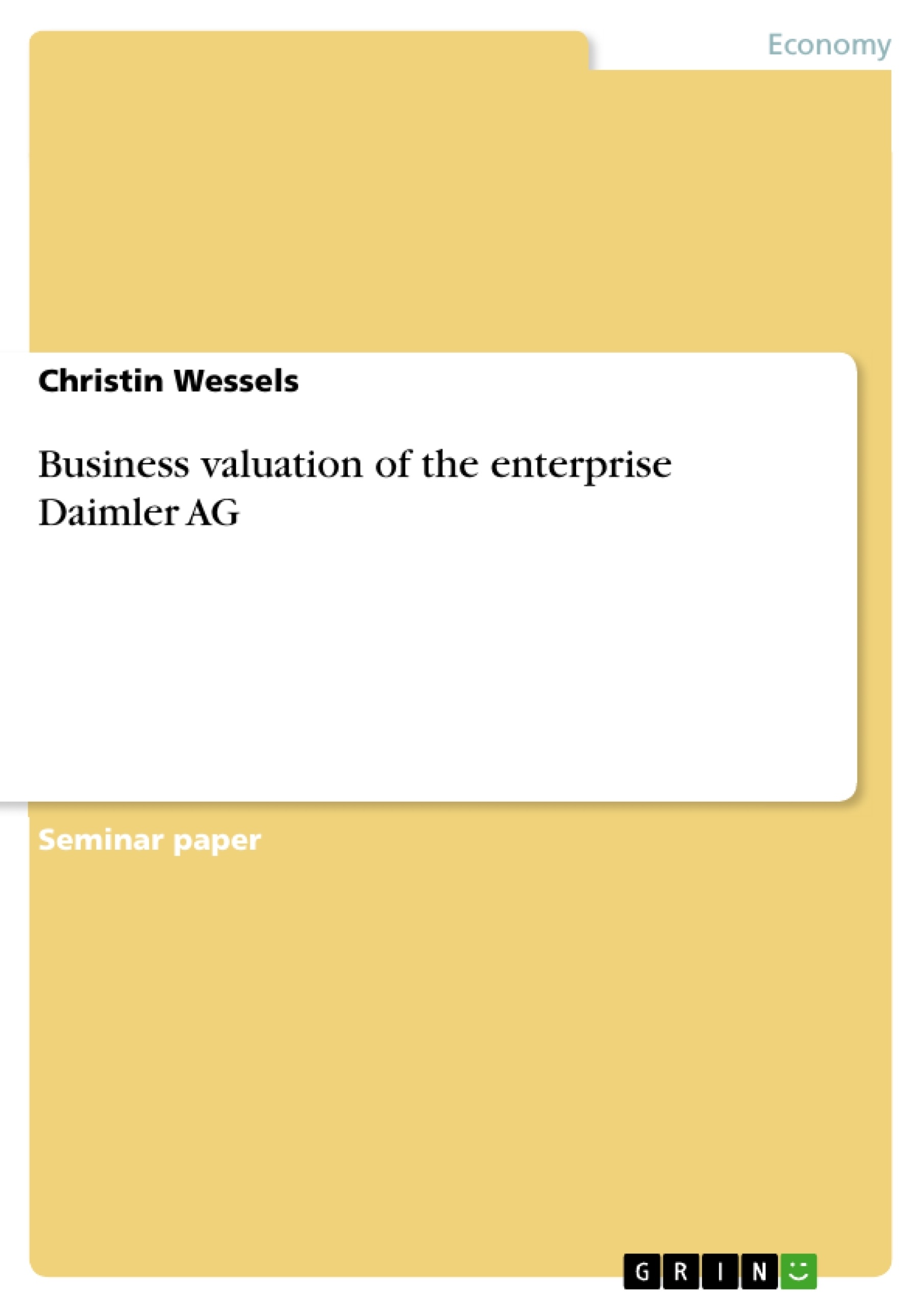The valuation of businesses is since decades a theme, which is still up to date and growing. The reason for the high interest regarding the theme is quite simple: If an enterprise is valued, there is a high amount of money involved. Business values are daily business, at the same time they have a high amount of complexity and issues, the raters are confronted with. The reason for a business value could be different, starting with management successions and ending with the buy out of an enterprise.
The value of an enterprise is subjective and contents conflicts of interests. On one hand there is the current owner. For him the enterprise has an added value because of the personal background. On the other hand, there is the further buyer of the company, who wants to pay a lower price for the company to minimize the liabilities. Because of this the value of a business depends on the target and the reason of the valuation, reflecting the motto “The Price is what you pay. Value is what you get.”
The value of the business can be calculated by different ways. In the last years, the amount of valuation methods increased. Currently there are many valuations available, which end in different results. But how is the value of an enterprise defined and calculated? Why is the value of a business needed? And what are the differences between the methods? These questions will be answered in the present assignment. The Objective is to show with the help of the concrete example Daimler AG the process of a business valuation including the calculation of the value of the enterprise.
To achieve this objective, the methodology of the present assignment is described in the following chapter first, before the theory of business valuations will be explained. The reasons for a valuation are described and the methods with a focus on Discounted cash flow methods (DCF) and multiples methods are stated. After presenting the company Daimler the methods are applied of Daimler in the fourth chapter, the business value will be calculated with the different methods. The results will be discussed in chapter five, before finally a conclusion and outlook will be given.
Contents
List of figures
1. Introduction
1.1 Problem and Objective
1.2 Scope of Work
2. Methodology
3. Theoretical background
3.1 Business Valuation
3. .1 Valuation methodologies
3. .1.1 Discounted Cash flow methods
3. .1.1.1 Entity methods
3.1.1.1.2 Equity methods
3.1.1.1.3 Advantages and disadvantages DCF methods
3.1.1.2 Multiples method
3.2 Presentation Daimler AG
4. Valuation of the Company Daimler AG
4.1 Discounted Cash flow method
4.1.1 Entity method
4.1.2 Equity method
4.2 Multiples method
4.3 Summary of the results
5. Discussion
6. Conclusion and outlook
Bibilography
ITM-Checklist
- Citar trabajo
- Christin Wessels (Autor), 2016, Business valuation of the enterprise Daimler AG, Múnich, GRIN Verlag, https://www.grin.com/document/442181
-

-

-

-
¡Carge sus propios textos! Gane dinero y un iPhone X. -

-
¡Carge sus propios textos! Gane dinero y un iPhone X. -

-
¡Carge sus propios textos! Gane dinero y un iPhone X. -

-
¡Carge sus propios textos! Gane dinero y un iPhone X. -

-
¡Carge sus propios textos! Gane dinero y un iPhone X. -

-
¡Carge sus propios textos! Gane dinero y un iPhone X. -

-
¡Carge sus propios textos! Gane dinero y un iPhone X. -

-
¡Carge sus propios textos! Gane dinero y un iPhone X. -

-
¡Carge sus propios textos! Gane dinero y un iPhone X.

